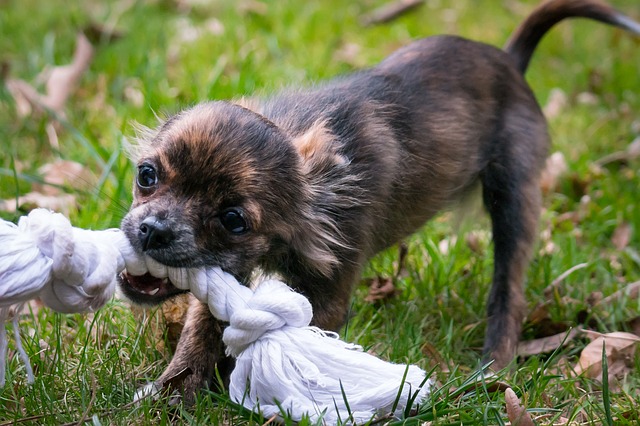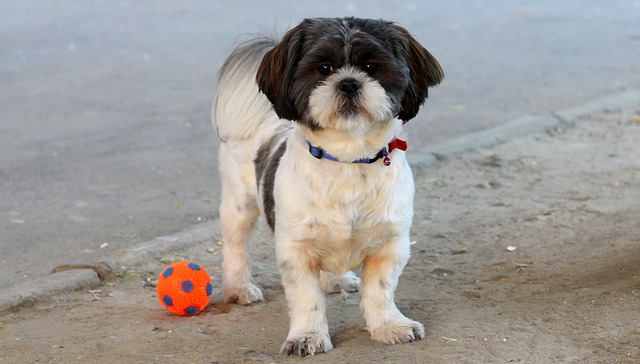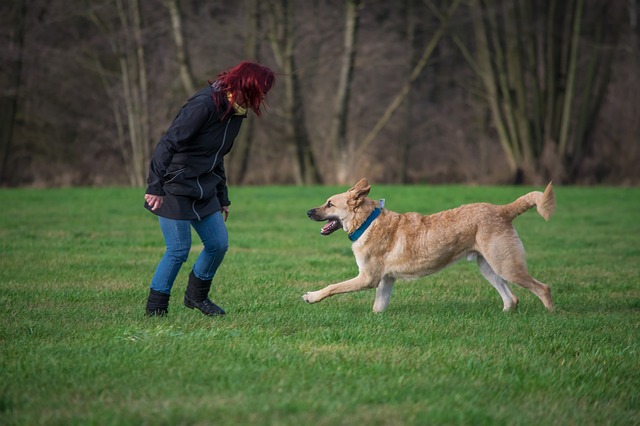Go to any dog park and you’ll see man’s best friend engaging in all types of play. They’re fetching, chasing, tugging, and tackling, but what about the emotionally hurt and traumatized of the group?
For those dogs, the simple act of letting loose and having fun is a foreign concept. Not knowing how to play and not having the confidence to engage with others is something that affects dogs of all breeds and backgrounds. It’s true that some dogs are naturally less energetic than others, but every dog deserves the chance to embrace their playful side.

Emotional Trauma in Dogs
When thinking about the hardships many dogs face, physical abuse is always first to mind. But when those bodily wounds heal, the bruises of emotional trauma linger. The psychological suffering continues long after the dog is rescued. Many formerly abused and neglected dogs shut down emotionally, and they need to learn basic behaviors, like playing, all over again. In other cases, adult dogs don’t play because they were never taught how. There’s no chance for socialization when they’re living in neglect, and they grow up not understanding the concept of fun.
Even dogs that grow up well cared for in happy homes can suffer emotional trauma. An unpleasant experience at the vet’s office, an altercation at the dog park, or the loss of a person or animal they were particularly connected to are all potentially traumatizing experiences. It’s not up to humans to determine what’s traumatizing and what’s not. Something that seems insignificant to the dog’s owner could have a lasting psychological impact on the dog. Paws Abilities says,
“Too often, we get caught up in the stories we tell ourselves about our dogs’ pasts, and forget to pay attention to the animal in front of us. While trauma can have lasting consequences due to its huge impact on the way the brain develops and processes information, patient behavioral modification and an environment of safety can have equally powerful effects.”

Why Play Is Important
Play is a valuable skill set that benefits dogs in more ways than one. Not only is it an opportunity to improve the dog’s quality of life by adding fun to their daily routine, it also teaches proper socialization. Dogs need play to show them how to interact with both people and other animals. It’s mental stimulation that keeps them engaged in their experiences, and it’s an excellent bonding opportunity. Ten minutes of tug-of-war is 10 minutes spent strengthening the human/dog relationship. Not to mention, all forms of play are great exercise.
Tips For Teaching a Dog How To Play
1. Start Slow
Dog owners know playtime is a positive thing, but their pooches need more time to catch on to the concept. Jumping in too fast and too soon could be an overwhelming step backward instead of progress moving forward. You don’t want to scare your dog, and it’s best to slowly ease them into the idea of playing. Try putting yourself in their paws and consider what they would deem safe versus threatening. Dog behaviorist Victoria Stilwell says,
“You cannot build a strong bond with your dog unless you truly understand how he perceives the world around him, but to do this effectively you must first learn his language and appreciate his sensory experience.”

Start by leaving toys around the house. Place them in their crate and on their bed to safely gauge their reaction. As long as they aren’t obviously spooked by the object, you can move forward with encouraging them to interact.
2. Positively Reinforce Their Interest
Positive reinforcement is one of the most valuable training tools available to dog owners. When your dog starts to show interest in toys, quickly mark the behavior with something positive. Toss them a treat, give lots of praise, and scratch their belly in that way they love. Do it over and over, and they’ll soon start to associate toys with all the best things in life.
3. Get Involved
You can’t expect your pup to pick up a toy and start playing by themselves. You need to lead by example and show them that whether it’s past abuse or a lost loved one that’s holding them back, playing is a fun way to get attention from their favorite person.

Don’t scare them by moving too fast, but start engaging play with the toys they feel comfortable with. If they’ve shown interest in a ball, gently roll it in their direction. If they’ve grown accustomed to seeing a rope toy around the house, start tossing it around in your hands while making happy facial expressions. The goal is to spike their interest so they want to figure out what you’re doing. Entice them to come over to you, but never force them. It needs to be their choice to do it all on their own.
4. Pick the Right Type of Play
Dogs don’t all play the same way. Some are crazy about fetch while others prefer the thrill of tug-of-war. If you really want your dog to learn to love playing, help them find the right game. It will take trial and error, but always follow your dog’s lead. Fetch, tug, chase, agility, disc jumping, lure-coursing, nosework, hide and seek, and puzzles are all games worth trying out. Your dog might even want to make up their own game, and that’s okay too. Blue Cross suggests,
“It depends on your dog’s personality. Watch what your dog does when excited. Does your dog chase, grab or pounce on things? Experiment with a few different toys and, using a toy, mimic your dog’s natural play behavior.”
If you’re having trouble finding a game your dog likes, take hints from their breed. Collies, for example, usually aren’t up for chasing a ball and bringing it back, but they excel at agility and plucking flying discs out of the air. Labs and Golden Retrievers are famously ball crazy, but sight hounds tend to prefer playing with prey sticks and letting loose during lure coursing.

5. Keep It Fun
The first time your dog engages in a full-on play session will be a great experience. You’re over that first hurdle, but it’s important to not give up on training efforts. If you want them to continue playing, make sure every play session is a positive experience. Don’t get upset when they “break the rules” of fetch by not bringing the ball back. If they sense you’re mad, they won’t want to play again. You can teach them “rules” as you see fit, but do it with positive reinforcement. You want every play session to end with your dog happy and tired, not confused or frustrated.
Remember to be patient and understanding of the mental barriers you’re asking your pup to overcome. Playing might seem like no big deal to you, but for a dog struggling to move on after a traumatic experience, it’s everything. Be patient and compassionate as you gently guide your dog toward a better quality of life through play.
Be the first to comment